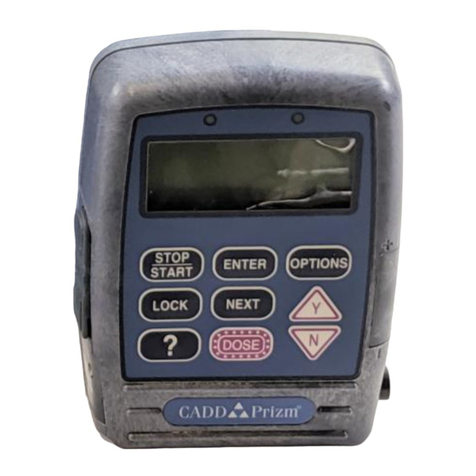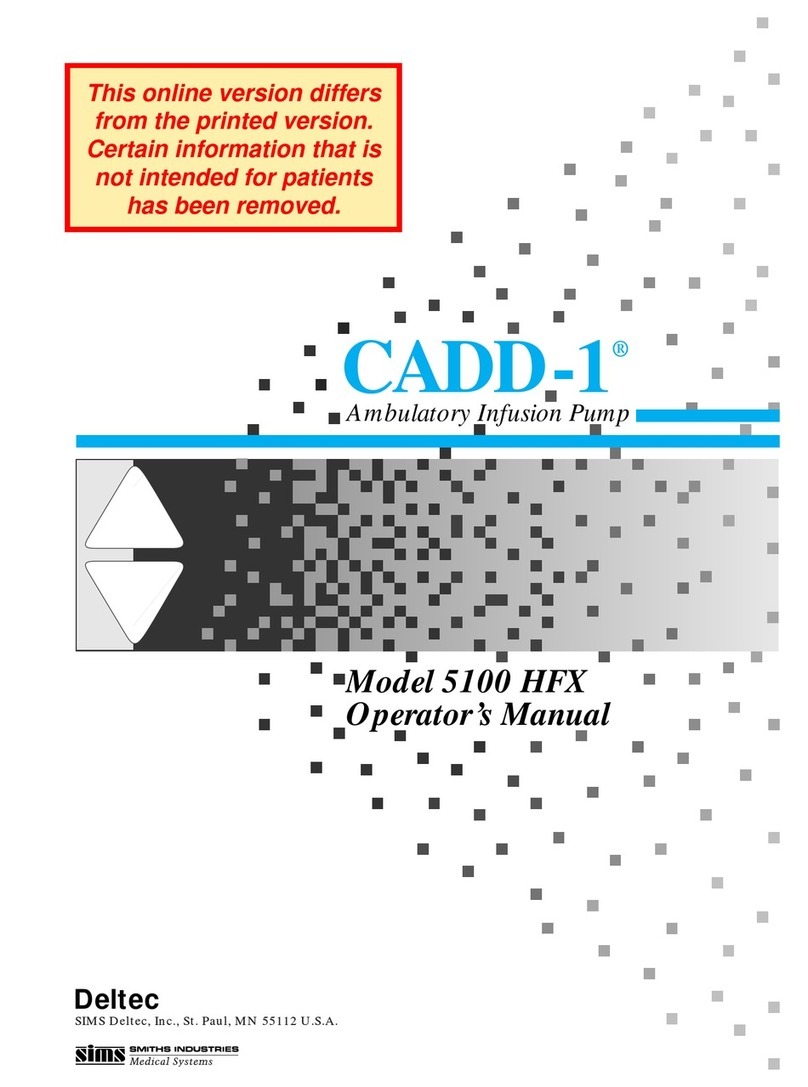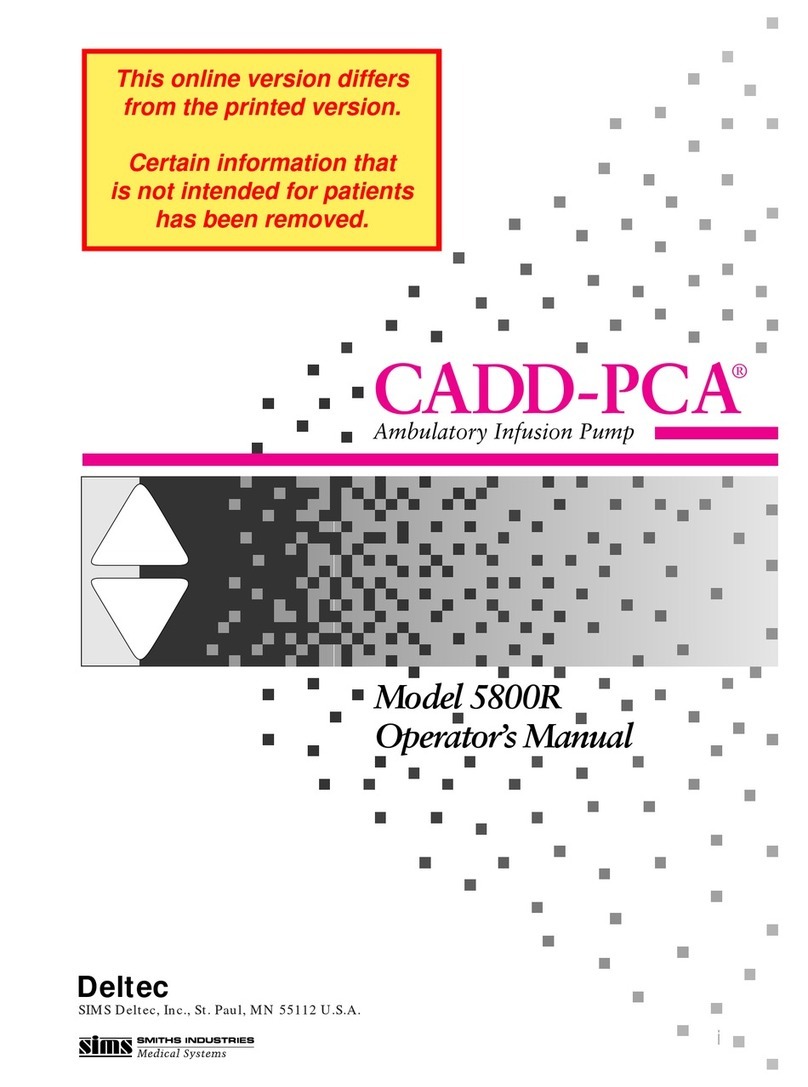iv
CONTENTS
1.0 INTRODUCTION ................................................................................... 1
2.0 GENERAL DESCRIPTION OF CADD-PLUS®PUMP OPERATIONS .. 1
2.1 WARNINGS and CAUTIONS ....................................................... 2
2.1.1 WARNINGS ......................................................................... 2
2.1.2 CAUTIONS .......................................................................... 3
2.2 Physical Description of the Pump and Accessories ...................... 4
2.2.1 Items Packaged with the Pump ......................................... 5
2.2.2 Description of the Function Keys and Display Panel ......... 5
2.2.3 Description of the Reservoir or Administration Set ............ 6
2.3 Understanding the Delivery Modes .............................................. 7
2.4 Description of the Continuous Delivery Mode .............................. 7
2.4.1 The Reservoir-Residual Volume (RES VOL) .................... 7
2.4.2 Continuous Rate (ML/HR) ................................................. 8
2.4.3 The Amount GIVEN (GIVEN) ........................................... 8
2.5 Description of the Intermittent Delivery Mode ............................... 8
2.5.1 The Reservoir-Residual Volume (RES VOL) .................... 9
2.5.2 The Delivery Volume (ML) ................................................. 9
2.5.3 The Delivery PERIOD (PERIOD) ...................................... 9
2.5.4 The Delivery CYCLE (CYCLE) .......................................... 10
2.5.5 The KEEP VEIN OPEN (KVO) Rate ................................. 10
2.5.6 The DELAY START Function (DELAY START) ................ 10
2.5.7 The CYCLE GIVEN (CYCLE GIVEN) ............................... 11
2.5.8 The Amount GIVEN (GIVEN) ........................................... 11
3.0 OPERATOR INSTRCTIONS ................................................................. 12
3.1 Installing or Replacing the Battery ................................................ 13
3.2 Preparing to Program the CADD-PLUS®Pump ........................... 16
3.3 Programming the CADD-PLUS®Pump for Continuous Delivery .. 19
3.3.1 Selecting the Continuous Delivery Mode .......................... 19
3.3.2 Setting the Reservoir-Residual Volume (RES VOL) ......... 20
3.3.3 Setting the Continuous Delivery Rate (ML/HR) ................. 22
3.3.4 Reviewing the GIVEN Mode .............................................. 23
3.4 Programming the CADD-PLUS®Pump for Intermittent Delivery .. 24
3.4.1 Selecting the Intermittent Delivery Mode ........................... 24
3.4.2 Setting the Reservoir-Residual Volume (RES VOL) ......... 25
3.4.3 Setting the Delivery Volume (ML) ...................................... 27


























